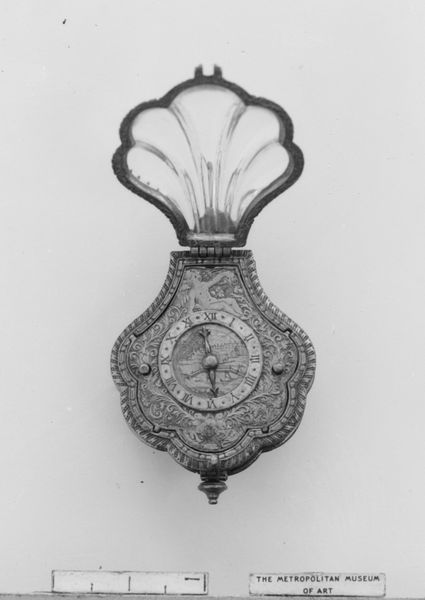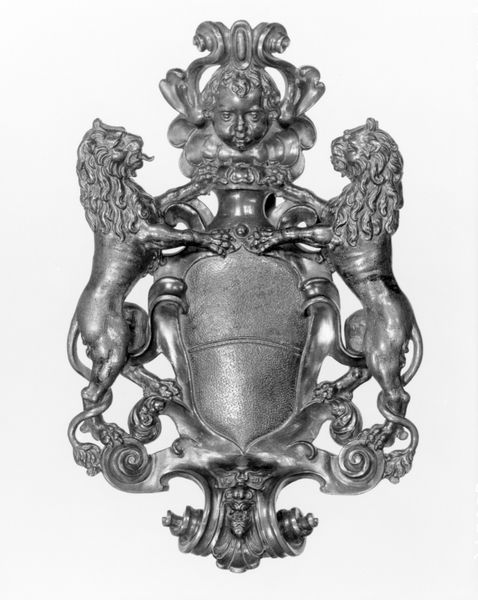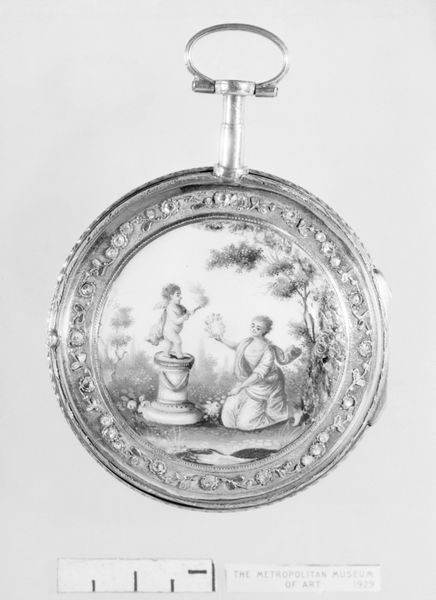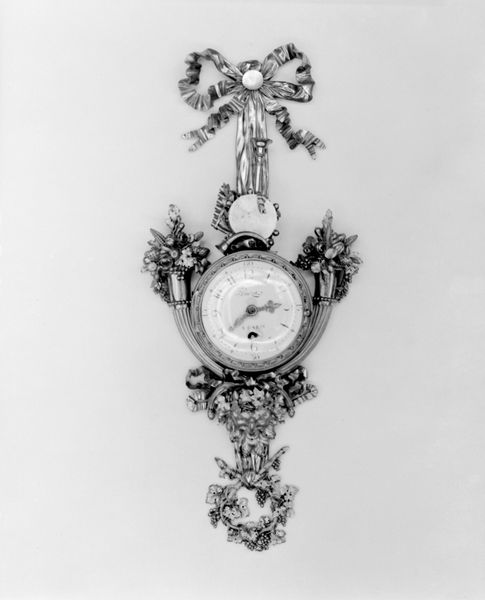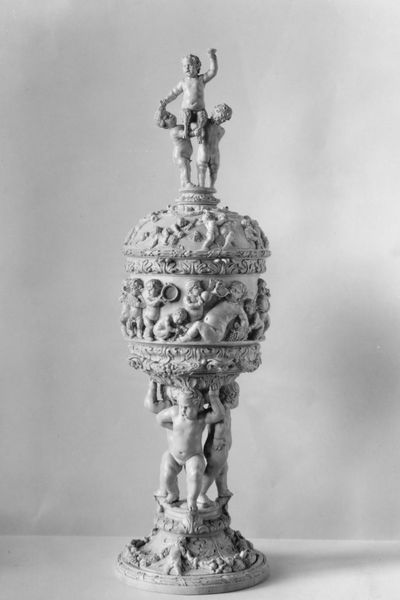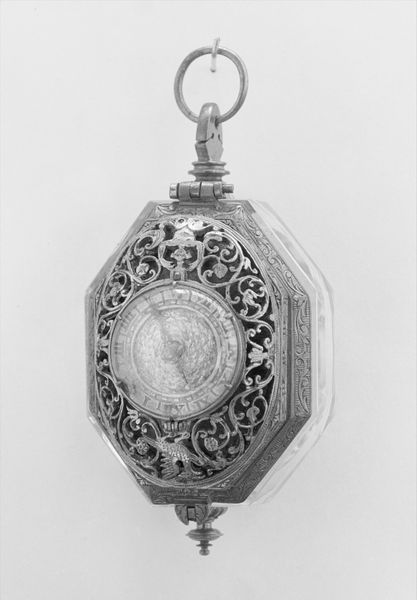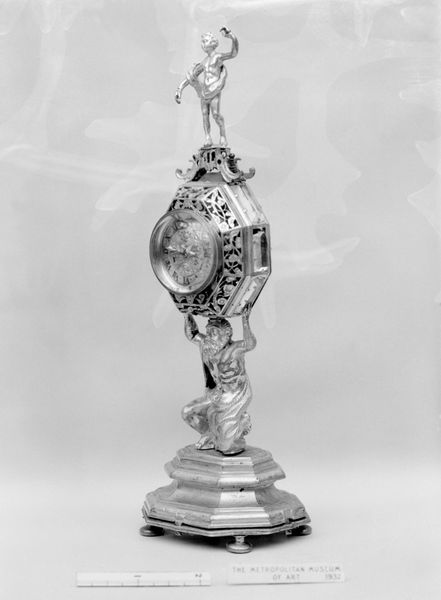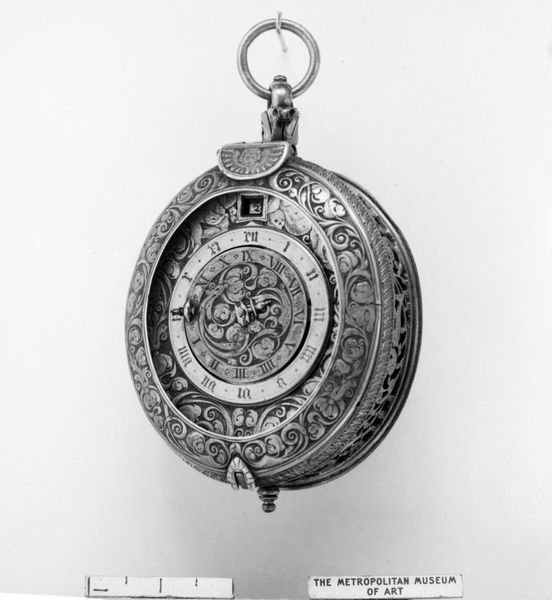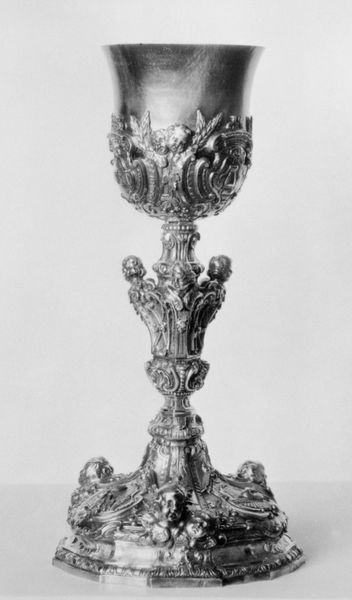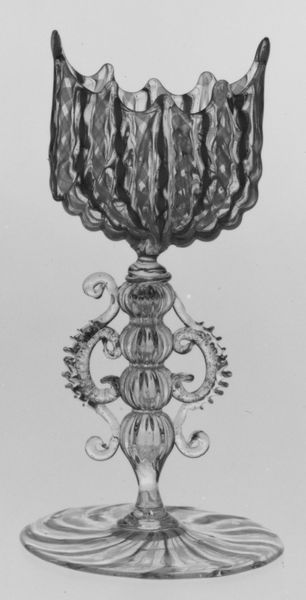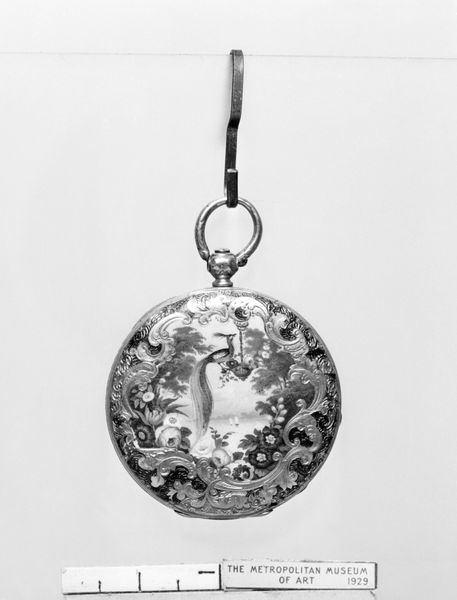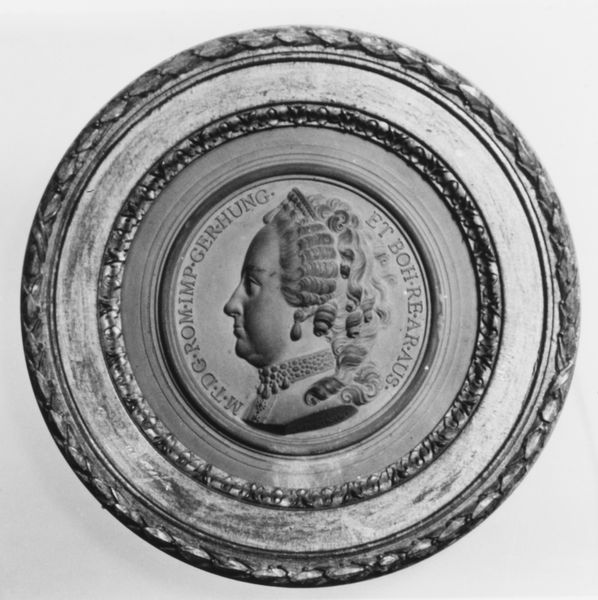
metal, sculpture
#
neoclacissism
#
metal
#
sculpture
#
geometric
#
sculpture
#
decorative-art
Dimensions: 3 × 2 in. (7.6 × 5.1 cm)
Copyright: Public Domain
Editor: This is a 'Watch,' dating from 1800 to 1815, and it's on display at the Metropolitan Museum of Art. It's crafted from metal, with these exquisite decorative-art elements. It feels incredibly intricate. How should we read the craftsmanship in terms of its historical context? Curator: From a materialist perspective, we need to examine the means of production. How was this watch crafted? Was it mass-produced, or painstakingly hand-made? The presence of what appear to be numerous pearls suggests the watch wasn’t purely functional but also meant to be decorative, to broadcast a message about its owner's affluence. Editor: I see your point. The materials used, particularly the metalwork and pearls, definitely speak to status. What about the symbols and imagery? Curator: Think about what access to this level of craft and these materials meant during the Neoclassical period. Who had that access, and how does this object reinforce or subvert those social structures? Were the artisans respected members of society, or were they simply laborers whose names were erased by their patrons? Consider that watch-making during this period transitioned from artisanal workshops to larger-scale manufactories. Editor: So the very act of creating such a detailed piece might speak to that transition, either celebrating traditional craftsmanship or perhaps pointing to its changing place in society. Curator: Exactly. The level of detail also begs the question: to what end? Was it a necessary detail? Did that intricacy impact the perceived value, and if so, how was that perceived value created and maintained within the social and economic landscape of the time? Editor: This makes me think about the social narrative that such a beautifully decorated timepiece embodies! Thanks for pointing this out. Curator: Remember, art objects are not just aesthetically pleasing; they are products of their time, shaped by labor, materials, and consumption. Examining them through that lens opens up a deeper understanding of the past.
Comments
No comments
Be the first to comment and join the conversation on the ultimate creative platform.
